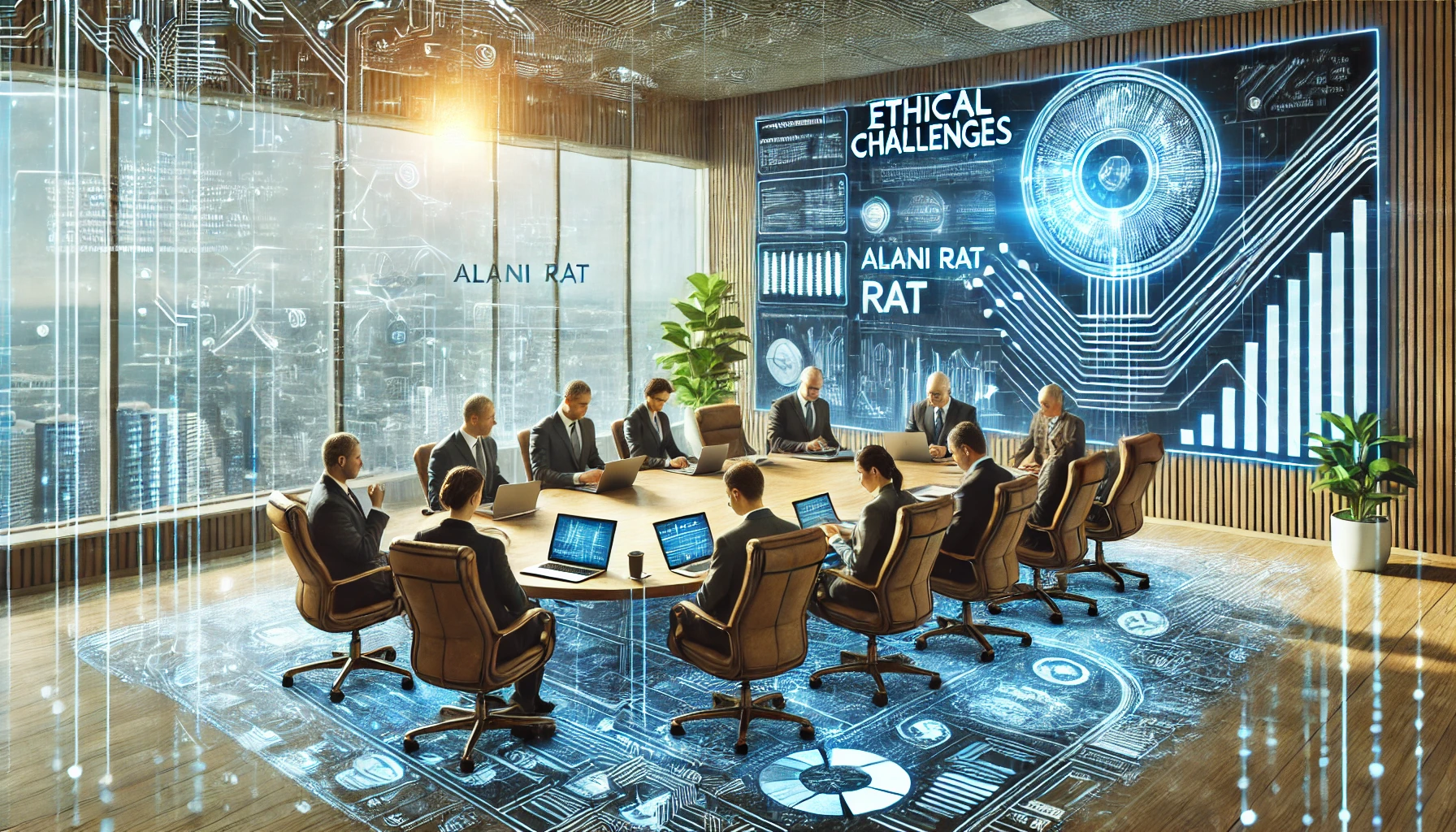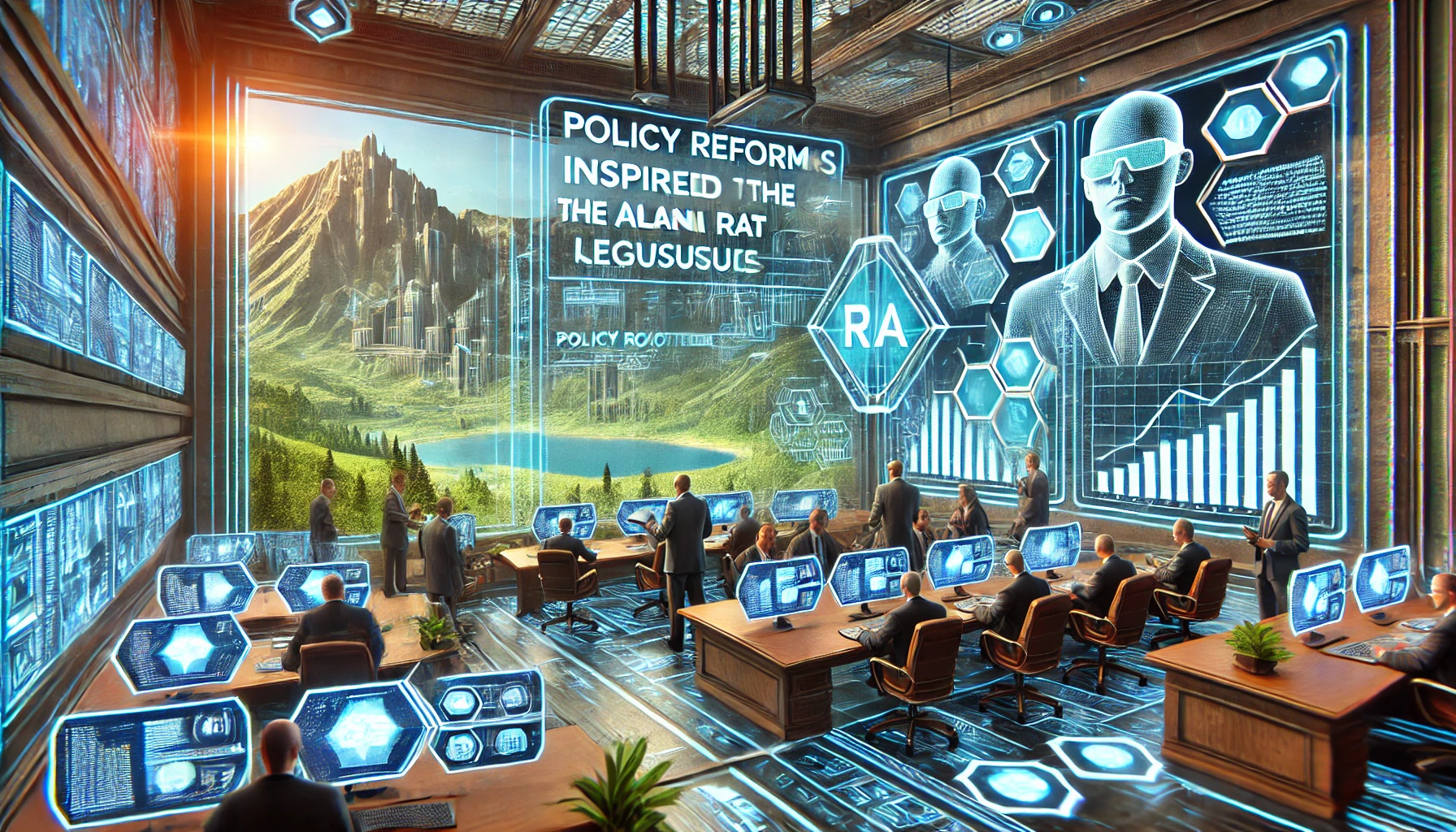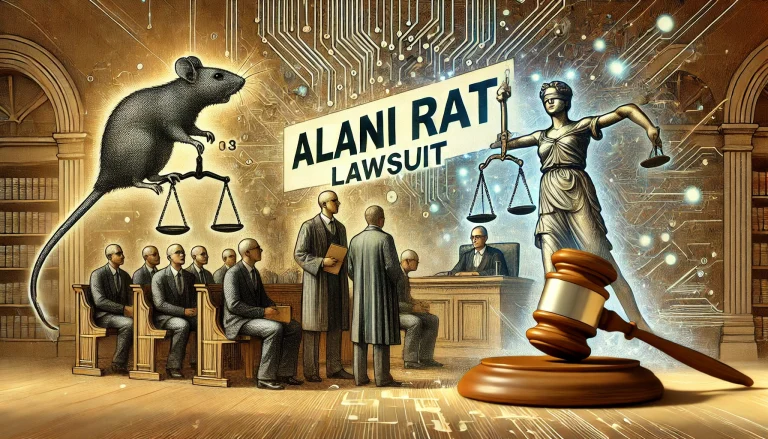The Alani Rat Lawsuit has become a pivotal case highlighting serious allegations of negligence and safety violations. It has drawn widespread attention due to its potential to reshape regulatory standards and corporate accountability. This lawsuit underscores the growing demand for transparency and ethical responsibility across industries.
Background and Origin of the Case
The Alani Rat Lawsuit originated from a highly publicized dispute concerning allegations of negligence and safety violations. The case centers around claims that improper standards led to significant issues, sparking legal challenges.
The controversy first gained attention when complaints were made about practices that allegedly endangered public health. Critics argued that the issue went unchecked for an extended period, raising questions about regulatory oversight.
Investigation reports revealed a series of failures that triggered legal action. These reports detailed concerns about standards and safety protocols, which were cited as primary causes of the dispute.
Observers note that the case is emblematic of systemic flaws in certain industries. It has drawn attention to the need for stricter enforcement of laws governing public safety and compliance.
Key Entities Involved
The lawsuit involves several key parties, including corporate entities accused of violations and individuals representing regulatory agencies. Each has played a significant role in shaping the trajectory of the case.
The plaintiffs in the case allege harm caused by negligence, while the defendants maintain their compliance with existing regulations. Legal teams for both sides have engaged in extensive arguments to support their respective positions.
Regulatory bodies are also under scrutiny for their role in overseeing compliance. Critics argue that lapses in enforcement contributed to the conditions that led to the dispute.
Media outlets have amplified the voices of activists and organizations advocating for accountability. Their involvement has kept the case in public focus.
Legal Allegations at the Core of the Case
The Alani Rat Lawsuit centers on claims of negligence and failure to meet safety standards. Plaintiffs argue that this negligence resulted in significant risks to health and safety.
Legal experts highlight the complexity of the case, noting that it involves multiple layers of accountability. Issues such as regulatory compliance, ethical considerations, and industry practices are at the forefront.
Key Allegations Include
- Failure to adhere to safety protocols mandated by regulatory guidelines.
- Delayed responses to identified risks, exacerbate the problem.
- Alleged suppression of internal reports that highlighted potential hazards.
A pivotal element of the lawsuit is the evidence provided by whistleblowers. Their testimonies and documentation have added weight to the plaintiffs’ claims, shaping the legal narrative.
Public Reaction to the Alani Rat Lawsuit
Public reaction to the case has been polarizing. While some view it as a necessary reckoning for accountability, others see it as a broader commentary on systemic failings.
Protest movements have emerged, with activists calling for stricter enforcement of safety laws. These protests have gained traction on social media, where the case has been widely debated.
A recent survey revealed that:
| Public Perception | Percentage |
| Support stricter regulations | 68% |
| Believe oversight agencies failed | 52% |
| Unsure or no opinion | 16% |
Meanwhile, opinion pieces in prominent publications have emphasized the potential lessons to be learned from the lawsuit. Writers argue that it could pave the way for reforms.
Timeline of Major Developments
The Alani Rat Lawsuit has progressed through several significant stages, each marked by new revelations and legal proceedings.
- Initial Discovery: Concerns were first raised by whistleblowers in early 2023, leading to internal investigations.
- Legal Filing: In mid-2023, plaintiffs filed a formal lawsuit, alleging gross negligence and seeking damages.
- Media Coverage: By late 2023, the case had gained national attention, with investigative reports uncovering additional details.
- Judicial Proceedings: Preliminary hearings began in early 2024, with both sides presenting evidence and arguments.
- Ongoing Litigation: As of now, the case is in its evidentiary phase, with key testimonies expected to shape the outcome.
Observers note that the timeline underscores the importance of early intervention and transparency in preventing such cases from escalating.
Media’s Role in Shaping Perceptions
The media has played a critical role in shaping public perceptions of the Alani Rat Lawsuit. From breaking news coverage to detailed investigative reports, media outlets have brought significant attention to the case.
Journalists have highlighted key developments, often emphasizing the broader implications for public safety and regulatory practices. This coverage has amplified the voices of both critics and supporters involved in the lawsuit.
Social media platforms have further expanded the case’s reach. Hashtags and viral posts related to the lawsuit have drawn millions of views, fostering widespread discussion and debate.
Media Impact Highlights
- Mainstream outlets increased awareness by publishing exclusive interviews.
- Social media fueled real-time updates and public discourse.
- Independent journalists investigated the historical context and underlying issues.
While media coverage has raised awareness, it has also introduced biases. Critics argue that sensationalized reporting may overshadow nuanced legal arguments, influencing public opinion prematurely.
Court Decisions and Their Implications
The Alani Rat Lawsuit has seen several pivotal court rulings, each shaping the case’s trajectory. These decisions have clarified legal responsibilities while signaling broader implications for similar disputes.
One key ruling was the court’s decision to admit whistleblower testimonies as evidence. This decision reinforced the importance of internal accountability in corporate practices.
The court also issued a preliminary injunction requiring temporary operational changes by the defendants. This move was intended to mitigate ongoing risks while the case proceeds.
Rulings to Date
| Ruling | Implication |
| Whistleblower testimonies allowed | Strengthened plaintiff’s case. |
| Temporary injunction issued | Mandated immediate safety measures by defendants. |
| Motion to dismiss denied | Allowed the lawsuit to proceed to trial. |
Legal experts note that these decisions highlight the judiciary’s willingness to hold parties accountable while balancing public safety concerns. However, the final verdict remains crucial in determining the long-term outcomes.
Comparison with Similar Cases
The Alani Rat Lawsuit shares similarities with several historical cases involving allegations of negligence and regulatory oversight. Examining these cases provides valuable context for understanding broader legal and ethical trends.
One notable comparison is with a case involving a major food company accused of safety violations. Both cases highlighted systemic issues, including inadequate internal protocols and insufficient regulatory enforcement.
Similar lawsuits reveal recurring themes:
- Negligence Claims: Allegations of ignoring safety concerns are common.
- Role of Whistleblowers: Many cases rely heavily on insider testimonies.
- Public Outcry: Media and public activism often escalate pressure on defendants.
Despite these parallels, the Alani Rat Lawsuit stands out due to its unique focus on specific industry practices. This distinction may influence how courts and regulators approach the case and its potential impact.
Ethical and Legal Considerations
The Alani Rat Lawsuit raises complex ethical and legal questions. At its core are debates about corporate accountability, regulatory enforcement, and public trust in safety standards.
Ethically, the case underscores the tension between profit motives and societal responsibilities. Critics argue that prioritizing cost-cutting over safety represents a breach of moral obligations.
Legally, the case examines whether existing frameworks sufficiently address systemic negligence. Plaintiffs argue that regulatory gaps allowed violations to persist, necessitating stronger oversight mechanisms.
A key ethical concern involves whistleblower protection. Testimonies in this case highlight the risks faced by individuals who expose wrongdoing, underscoring the need for robust safeguards.
While the lawsuit aims to resolve legal disputes, its ethical implications extend beyond the courtroom. Observers hope it will prompt industries to adopt more transparent and accountable practices, ensuring long-term trust and safety.
Regulatory and Policy Implications
The Alani Rat Lawsuit has significant implications for regulatory frameworks, highlighting potential gaps in existing policies. Many experts argue that the case underscores the urgent need for stronger enforcement of safety standards.
One major regulatory concern is the role of oversight agencies. Critics suggest that delayed actions by these bodies may have allowed the violations to persist, calling for stricter timelines and compliance checks.
Policymakers are also exploring how to address systemic issues revealed by the case. Suggestions include enhanced whistleblower protections and greater transparency in corporate reporting.
Proposed Policy Changes
- Mandating periodic third-party audits for safety compliance.
- Increasing penalties for non-compliance to deter violations.
- Strengthening enforcement mechanisms within regulatory bodies.
If these reforms are implemented, the lawsuit could serve as a blueprint for future policy adjustments. Such changes may prevent similar cases from occurring and bolster public trust in regulatory systems.
Prospects of a Resolution or Settlement
The likelihood of a resolution in the Alani Rat Lawsuit hinges on several factors, including the strength of evidence and the willingness of both parties to negotiate. Settlements are often preferred to avoid prolonged litigation.
Legal experts believe the defendants may opt for a settlement to minimize reputational damage. However, plaintiffs appear determined to seek accountability, making an out-of-court resolution uncertain.
Negotiations could focus on financial compensation, operational reforms, or public acknowledgments of responsibility. The complexity of these discussions may delay any resolution.
In previous similar lawsuits:
| Case Type | Settlement Rate | Time to Resolve |
| Negligence Claims | 75% | 18 months |
| Regulatory Violations | 62% | 24 months |
While settlements remain a possibility, ongoing judicial proceedings suggest both sides are prepared for a drawn-out battle. The ultimate outcome will likely shape future cases of this nature.
Expert Commentary on the Alani Rat Lawsuit
Legal analysts have offered varying perspectives on the Alani Rat Lawsuit, reflecting its complexity. Some experts emphasize the need for accountability, while others highlight the legal challenges of proving systemic negligence.
Whistleblowers have been a focal point of expert analysis. Their role in exposing internal practices has been praised as a critical element of justice. However, concerns about the adequacy of existing protections for such individuals remain.
From an industry perspective, experts argue that the case exposes vulnerabilities in current safety standards. They recommend comprehensive reforms to prevent similar lawsuits in the future.
Expert Insights
“This case could redefine corporate accountability,” one legal scholar noted.
- Industry analysts suggest investing in proactive safety measures to mitigate risks.
- Ethical commentators highlight the moral duty of organizations to prioritize public welfare.
The commentary reflects a consensus that the lawsuit could be a turning point for legal and ethical standards across industries.
Long-Term Impact on Society
The Alani Rat Lawsuit has sparked widespread discussions about its potential long-term effects. These include changes to industry practices, public attitudes, and policymaking at various levels.
Industries directly linked to the case may face increased scrutiny. Companies could adopt stricter compliance measures to avoid similar legal challenges, leading to broader changes in operational standards.
Public trust is another area of impact. The lawsuit has highlighted gaps in oversight and accountability, prompting calls for more transparent practices. This shift in expectations could reshape consumer behavior.
Long-term societal effects could include:
- Enhanced awareness of safety standards.
- Strengthened whistleblower protections.
- Policy reforms addressing systemic negligence.
As the case unfolds, it is likely to influence regulatory discussions, industry behavior, and public confidence. The lawsuit could become a landmark case, symbolizing a shift toward greater accountability and ethical responsibility.
Conclusion
The Alani Rat Lawsuit represents more than just a legal battle; it serves as a critical examination of safety standards, regulatory accountability, and corporate ethics. The case has shed light on systemic gaps, prompting discussions about how to prevent similar issues in the future.
One of the most significant takeaways is the role of whistleblowers and investigative efforts in driving accountability. Their contributions have highlighted the importance of transparency and robust protective measures for those who expose wrongdoing.
FAQs
What is the central issue in the Alani Rat Lawsuit?
The lawsuit focuses on allegations of negligence and safety violations, raising concerns about regulatory compliance.
Who are the key parties involved in the case?
The case involves corporate defendants, whistleblowers, and regulatory agencies under scrutiny for oversight lapses.
What role did media play in the Alani Rat Lawsuit?
Media coverage amplified public awareness and debate, shaping perceptions through investigative reports and social media.
What are the potential outcomes of the lawsuit?
Possible outcomes include financial settlements, operational reforms, or significant judicial rulings impacting industry practices.
How could the lawsuit impact future policies?
It may prompt stronger regulations, better enforcement, and greater protection for whistleblowers in similar industries.
Article Recommendations
Sheetz Lawsuit Background Checks Debate: Are Blanket Hiring Policies Putting Companies at Risk?
UWM Lawsuit 2024: Why the Mortgage Industry Is Watching These Legal Cases Closely
Sparta Mesothelioma Legal Question: Exploring Compensation, Lawsuits, and Asbestos Trust Funds




